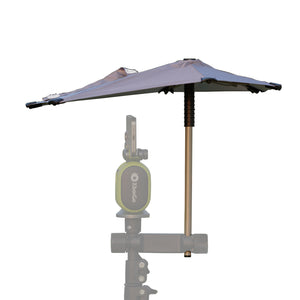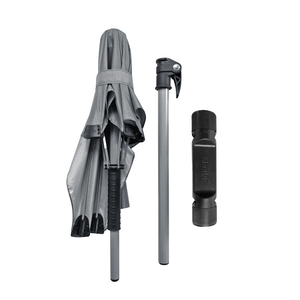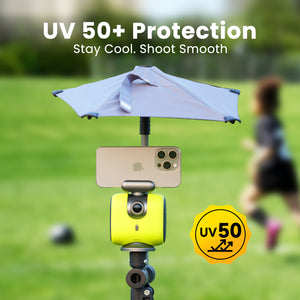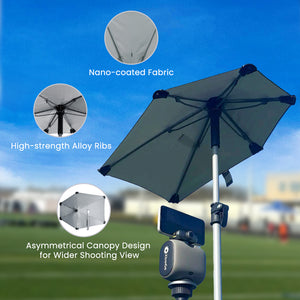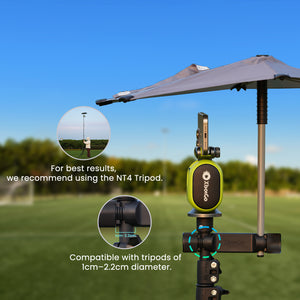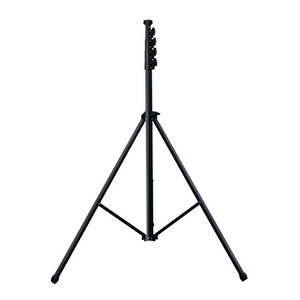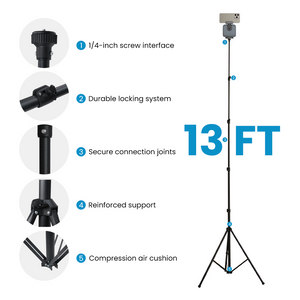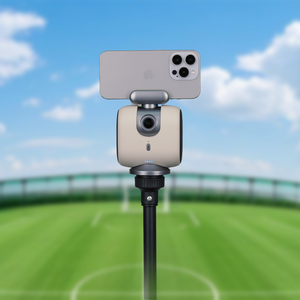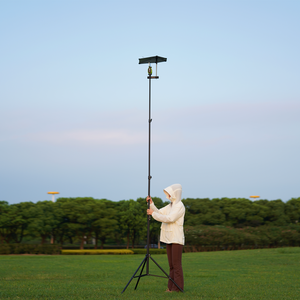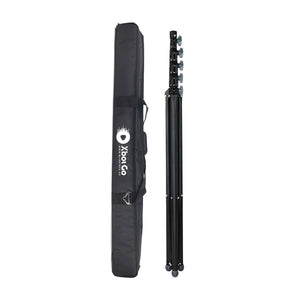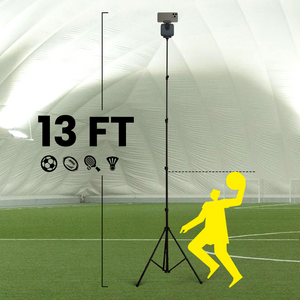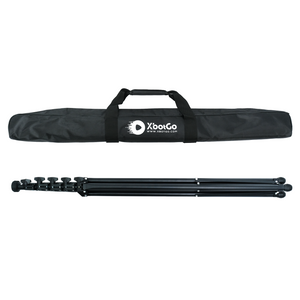XbotGo Chameleon AI Sports Camera
Hockey Skate Size Chart: Stop Wearing Wrong Sizes (2025 Guide)
You're standing at center ice, ready to take the face-off. The puck drops, and as you push off to chase it, your foot slides inside your skate. That split second of instability? That's the difference between winning the draw and watching your opponent streak toward your net. If you've ever experienced this frustration, you're not alone—and you're in the right place.
Why Your Hockey Skates Probably Don't Fit (And Why It Matters)
Here's a truth bomb that might sting: Most hockey players are wearing the wrong size skates. I've seen it countless times over my 20 years around rinks—players hobbling off the ice with blisters, struggling with edge control, or simply not reaching their potential because their feet are swimming in oversized boots.
The confusion starts with that classic advice we've all heard: "Just go down 1.5 sizes from your shoe size." If only it were that simple! After interviewing dozens of players and analyzing feedback from hockey communities, I've discovered the reality is far more complex—and far more interesting.
Understanding Hockey Skate Sizing Fundamentals
The Famous "1.5 Size Rule" (And Its Dirty Little Secret)
Yes, the general rule suggests hockey skates should fit 1 to 1.5 sizes smaller than your street shoes. For senior players, that typically means going down 1.5 sizes from your men's shoe size. Junior and youth players? Usually just 1 size down.
But here's what the sizing charts won't tell you: I've spoken with players who wear anywhere from 1 to 4 sizes smaller than their shoe size. One player I know wears size 12 sneakers but plays in 8.5 skates. Another wears size 9 shoes and size 8 skates. The variation is mind-boggling.
Why such differences? It comes down to three key factors:
- How you like your regular shoes to fit (loose vs. snug)
- Your foot shape (we'll dive deep into this)
- Which brand you're wearing (more on this headache shortly)
Age Categories: Not Just About Numbers
Hockey skates come in four main categories, and understanding these is crucial:
Youth Skates (Ages 9 and Under)
These little warriors need special consideration. While the rule says 1 size down from street shoes, here's a parent-friendly tip: When fitting youth skates, you should be able to slide a finger between the heel and the back of the boot when the skate is unlaced. This gives growing feet some room without sacrificing too much performance.
Junior Skates (Ages 8-10)
The tricky transition years! These skates typically run 1 to 1.5 sizes down from shoe size. Pro tip: If your young player is between categories, consider their playing frequency. Twice-a-week players might size up slightly for comfort, while daily players should prioritize performance fit.
Intermediate Skates (Ages 10-13)
The forgotten category! Not quite junior, not quite senior. These bridge the gap and typically follow the 1.5 size down rule more reliably than other categories.
Senior Skates (Size 8 Men's and Up)
This is where fit gets serious. Senior players should prioritize performance over comfort, often going 1.5 to 2 sizes down. Remember: Your skates are performance equipment, not bedroom slippers.
Brand Wars: Why Your Bauer Buddy's Advice Might Not Work
Here's where things get really interesting. Each brand has its own personality:
Bauer: The Precision Engineers
Bauer's new Fit 1, 2, 3 system sounds great on paper. But players report that Hyperlites run notoriously long—one player told me his size 8 Hyperlites felt like 8.5s in other Bauer models. If you're eyeing Hyperlites, consider going down an extra half size.
CCM: The Generous Canadians
CCM skates traditionally run slightly larger than Bauer. Their Tapered, Regular, and Wide system works well, but many players find they need a half size smaller in CCM compared to their Bauer size. I've seen this firsthand with players switching brands and being shocked at the difference.
True: The Shape-Shifters
True skates are the wild cards. Their foam padding compresses over time, which means your perfectly snug skates might feel loose after 20 hours of play. One player shared how his True Catalysts went from "perfect" to "sloppy" in just one season. Consider sizing down if you're going True.
Advanced Fitting Techniques That Actually Work
The Pen Test: Your New Best Friend
Forget fancy fitting systems—here's a simple test that works every time. After lacing your skates (but not cranking them tight), try sliding a pen behind your heel. Can't fit it? Good, you're probably in the right size. Pen slides through easily? Your skates are too big, period.
I learned this trick from a junior coach who'd been fitting skates for 30 years. He swore by it, and after trying it myself and recommending it to hundreds of players, I'm convinced it's the most reliable quick check available.
The Foot Tracing Method (For the Data-Driven Player)
If you're buying online or just love precision, here's the gold standard method:
- Gear up: Put on your hockey socks (yes, this matters!)
- Trace it: Stand on paper and trace your foot, keeping the pen straight up
- Measure twice: Length from longest toe to heel, width at the widest point
- Do the math: Divide length by width to get your ratio
- Know your category:
- Under 2.5 = Wide foot warrior (High volume)
- 2.5 to 3.0 = Standard soldier (Medium volume)
- Over 3.0 = Narrow ninja (Low volume)
Common Sizing Disasters (And How to Dodge Them)
The "Professional Fitting" Trap
Here's a controversial truth: Not all professional fittings are created equal. I've seen players leave stores with skates two sizes too big because the staff member was more worried about comfort complaints than performance.
One player shared this gem: "The store employee kept insisting I needed bigger skates because my toes touched the cap. I went with his recommendation, and spent a season sliding around like I was on banana peels."
If a fitter suggests skates where you can wiggle your toes freely, run. Your toes should brush the cap when standing in unlaced skates—that's not too small, that's perfect.
The Stiffness Stumble
This might be the most expensive mistake players make. Stiffness isn't about toughness—it's about matching the skate to your needs:
Beginners and Lightweight Players: Need softer skates. Period. Stiff skates will fight you every stride and slow your development. Think of it like learning guitar on strings made of steel cable—unnecessary and counterproductive.
Heavy Players or Frequent Skaters: Need the support of stiffer skates, even if you're still learning. Your weight or ice time demands it.
The 3+ Days per Week Rule: If you're on the ice this much, upgrade your stiffness regardless of skill level. Your skates need to survive the workload.
The Two-Foot Tango
Here's a fun fact nobody talks about: Most people have different-sized feet. Sometimes significantly so. I know a player whose left foot is a full size larger than his right. His solution? He buys for the larger foot and uses thicker socks on the smaller one.
Options for the asymmetrically-footed:
- Buy for the larger foot and modify the smaller
- Consider custom skates if the difference is extreme
- Use specialized insoles to take up space
- Accept that perfection might be impossible
The Ultimate Size Conversion Chart
|
Your Shoe Size (US Men's) |
Bauer/CCM Skate Size |
True Skate Size |
What Your Feet Will Feel |
|
6.0 |
4.5 |
4.0 |
Like a firm handshake |
|
7.0 |
5.5 |
5.0 |
Snug but not strangling |
|
8.0 |
6.5 |
6.0 |
Secure and stable |
|
9.0 |
7.5 |
7.0 |
Locked and loaded |
|
10.0 |
8.5 |
8.0 |
Performance-ready |
|
11.0 |
9.5 |
9.0 |
Race car tight |
|
12.0 |
10.5 |
10.0 |
No wiggle room |
The Width Wisdom
Width options can save your feet:
C Width: For the narrow-footed few (rare as hen's teeth)
D Width: Standard width (what 70% of players need)
R Width: CCM's "slightly wider" option
E Width: Wide (your feet thank you)
EE Width: Extra wide (the foot-freedom option)
Pro tip: If you're between widths, consider this—going wider is usually better than cramming your feet into narrow skates. You can always add thicker socks or insoles, but you can't make a narrow skate wider (despite what that salesperson might claim about "stretching").
Troubleshooting Your Fit Issues
"My Skates Feel Like Medieval Torture Devices"
Before you assume they're too small:
Check your break-in status: New skates need 8-10 hours to feel right. I've seen players almost return perfectly-sized skates because they judged them after one public skate session.
Consider heat molding: A proper bake can turn painful pressure points into comfortable contact. Just don't try this in your home oven—I've seen the melted disasters.
Examine your lacing: Cranking laces like you're starting a lawnmower creates artificial pressure points. Even tension is key.
Evaluate your socks: Thick athletic socks are comfort killers. Thin, moisture-wicking hockey socks are non-negotiable.
"My Feet Are Playing Slip 'N Slide"
Classic signs your skates are too big:
- Heel lifts when you walk (the "clop clop" sound)
- You lose edges on tight turns
- Blisters from friction (your foot shouldn't move enough to create friction)
- You're constantly retightening your laces
If you experience any of these, it's time to size down. No amount of extra socks or tighter lacing will fix oversized skates.
The Final Verdict: Your Pre-Purchase Battle Plan
The Non-Negotiable Checklist
Before you drop your hard-earned cash:
- The Toe Test: Unlaced, toes barely kiss the cap. Laced and standing, slight pullback.
- The Heel Test: Zero lift when walking. If your heel moves, the skate's too big.
- The Width Test: Standing naturally, no bulging over the sides. Your foot should sit on the footbed like it belongs there.
- The Comfort Check: Snug everywhere without pain points. Discomfort and pain are different—learn the distinction.
- The Brand Comparison: Try at least two brands in your size range. You might be surprised.
When to Call in the Pros
Seek professional fitting when:
- You're jumping categories (junior to senior is tricky)
- Experiencing persistent pain (pain isn't normal, despite what old-school players say)
- Dealing with unique feet (extra wide, narrow, or significantly asymmetrical)
- Investing serious money ($300+ deserves professional input)
- Nothing seems to work (sometimes you need custom solutions)
The Bottom Line
Finding the perfect hockey skate size is like finding the perfect partner—it takes time, patience, and kissing a few frogs. But when you find that perfect fit? Magic happens. Your edges become sharper, your speed increases, and most importantly, you stop thinking about your feet and start thinking about the game.
Remember: The best skate size is the one you forget you're wearing. When your skates become an extension of your body rather than a constant distraction, you've found your size.
Don't rush this process. Your feet carry you through every game, every practice, every moment on the ice. They deserve equipment that fits properly. Take the time, do the measurements, try the options, and invest in the fit that will elevate your game.
Now get out there and find your perfect fit. Your feet—and your teammates—will thank you.
XbotGo Chameleon AI Sports Camera
Capture every moment with AI-powered tracking. Perfect for coaches, parents, and athletes who want seamless footage without manual filming.







 Soccer
Soccer Basketball
Basketball Ice Hockey
Ice Hockey Rugby
Rugby










